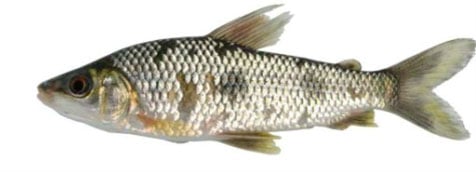DNA can be found in skin cells, feces, mucus and other biological materials in all living organisms, and all organisms shed DNA in their environment. eDNA-based methodology can detect DNA traces from environmental samples such as soil, snow, water and air.
“Thinking of UPM, all our operations affect the natural environment, mill sites and wood sourcing having the most impact. All knowledge of the impact we have on the environment is of major importance to us. eDNA is a promising new tool for accurately measuring biodiversity. It is an opportunity to get more information on which to build the most effective biodiversity-related measures,” says UPM Vice President, Responsibility, Sami Lundgren.
eDNA is an effective tool for species detection and biodiversity monitoring
Direct measurement of biodiversity is traditionally conducted as a field survey, possibly with the help of technology such as camera traps or satellite monitoring. These methods are costly, work-intensive and require immense expertise. They are also prone to miss elusive species. This is why habitat quality is often used as an indirect way to assess the state of biodiversity – a method UPM also relies on.
“The cost and effort of sending several highly educated experts to identify all species in a forest is considerably higher than gathering a handful of samples that get analyzed for DNA traces in a laboratory. The possibilities for gathering data on biodiversity with eDNA are impressive. Especially when it comes to organisms such as fungi and small invertebrates that are sometimes difficult to identify with 100% accuracy even with the best expertise”, describes Miika Laihonen, Senior Specialist, Environment at UPM Fibres Finland Operations.
Although promising, eDNA-based methodology is not perfect: it cannot determine the abundance of a particular species.
The NorthDIVeRSITY project develops the method for the Nordic ecosystem
In Finland UPM participates in the NorthDIVeRSITY project, led by the Natural Resources Institute Finland (Luke). The project develops eDNA tools, especially suited to Nordic ecosystems, to monitor fish and forest species. In addition to developing the method to northern climates, the project studies how removing migration barriers in stream waters affects aquatic wildlife, and maps wildlife.

Samples have been gathered at two connected river sites before the removal of an old mill dam and a road culvert, and the monitoring continues to record the changes at Kelvänjoki river area and Korisevanjoki river during 2025.
"Previously, to find out what fish species inhabit a body of water, electrofishing surveys and trout spawning nest counts have been conducted. eDNA expands what can be measured in running waters, including bottom-dwelling organisms and other small species, plants and algae. Traditional methods are still needed alongside eDNA – to help interpret the data and confirm which species are present," says Mikael Rytkönen, Manager, Environment, UPM Energy and coordinator of UPM's stream water program.
Pioneering work in mapping out the DNA of Uruguayan species
Some 12 000 kilometers southwest from Finland, in Uruguay, another eDNA pilot is under way. UPM collaborates with the Clemente Estable Institute of Biological Research to study the aquatic biota at UPM’s Esteros y Algarrobales del Río Uruguay Protected Area (the wetlands and algarrobo woodlands of the Uruguay River), a part of the Uruguay’s National System of Protected Areas and its only privately owned part.
An aquatic biota was chosen for the pilot because it is the most challenging to study with traditional methods.
"This pilot is especially important for Uruguay, as many of the DNA barcodes of our species remain undocumented or unknown. It involves collecting specimens, obtaining samples, and assigning DNA barcodes to each species thus supporting the creation of a more extensive library of DNA barcodes. These barcodes are submitted to international gene banks and made publicly available,” describes Ivan Grela, Coordinator, Biodiversity at UPM Fibres Operations in Uruguay.
A remarkable immediate result of the pilot was the discovery of a fish species entirely new to the Uruguayan biota. The Megaleporinus piavussu is a large freshwater fish with a streamlined, silvery-golden body. It can grow up to 40 cm in length. The first water samples identified altogether 48 species of fish, 8 amphibians, and 62 invertebrates.
“In addition to eDNA sampling, traditional methods are used to verify the results. 24 of the fish species found had not been previously detected through traditional methods. We’re eagerly anticipating the second batch of results, expected in August 2025,” says Grela.

Megaleporinus piavussu
Identifying lamprey species through eDNA
In another study funded by UPM, a team of researchers are employing eDNA-based methodology in Finland to discern two lamprey species from each other. The European river lamprey, Lampetra fluviatilis, migrates to the ocean to breed while the brook lamprey, Lampetra planeri, spends its whole life in the smaller freshwater streams and rivers. The two species are almost impossible to distinguish from each other before they grow to full adulthood. They also spend up to six years in their larval stage, buried in soft river sediment.
Species identification is also essential from the perspective of UPM’s stream water program, in order to gain more accurate information about the presence of migratory fish. Through eDNA, research can be done without disturbing the lamprey in their habitat.
In this study the researchers are interested in the specific DNA, which contains differentiating genetic factors in the two species’ migratory behavior. The trouble is, genomic DNA is harder to detect as there is less of it. The current work concentrates on finding ways to replicate this finding in water samples to create non-invasive detection method in water for these rare species.
“We’ve been able to distinguish the DNA sequences we are interested in by using genomic DNA. This has scientific significance, but it also provides real tools to protect the species and the ecosystems they rely on. On a larger scale, eDNA will disrupt the way we think about biodiversity. The cost of the technology is also coming down, making it more accessible,” says Saara Suurla, CEO of SpringDNA, a Finnish company specializing in offering biodiversity monitoring to companies and organizations.
Mainstream use could ignite a breakthrough in collecting data and understanding biodiversity
Future applications of the eDNA method include monitoring and protecting endangered species – such as the marsh frog and Siberian flying squirrel in Finland – detecting invasive species, enhancing understanding of ecosystems, and supporting wildlife conservation and biodiversity protection. It also holds potential in paleogenetics: studying the genetic material of ancient organisms. Combined with artificial intelligence and automated monitoring, eDNA could provide almost real-time, automated insight into biodiversity. Additionally, it may become integrated into environmental certification frameworks and environmental assessments.
“This method might become as commercially widespread as the genetic testing services people use to explore their ancestry. The possibilities it has for gathering new information on biodiversity are immense and with data we can mitigate our impacts better. We at UPM are happy to be a part of creating more visibility to biodiversity, regardless of the method,” emphasizes Sami Lundgren.